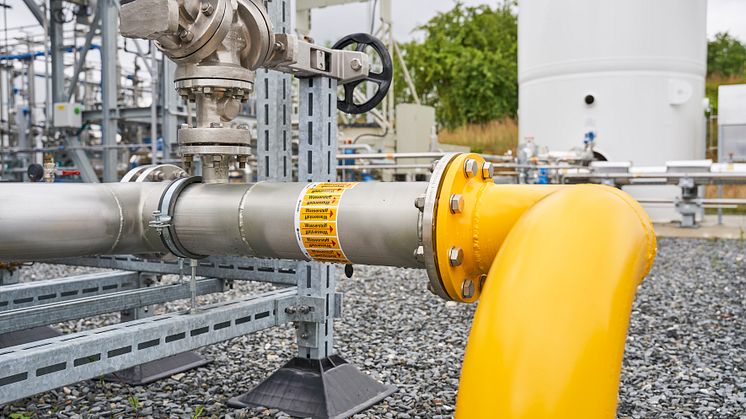
News -
Danish Hydrogen Pipeline to Germany
The Danish production of hydrogen and green fuels can promote both local growth and European security of supply. The government and a broad coalition of parties have now agreed to further support this development. At the same time, an important step has been taken to fully exploit the potential of Denmark's offshore wind resources.
To jump-start hydrogen production, the Danish government is providing a loan of DKK 7.4 billion (EUR 992 million) and operating subsidies of up to DKK 8.3 billion (EUR 1.07 billion) to support the construction of the hydrogen pipeline from Esbjerg to the German border. The booking requirements have also been lowered so that producers must now commit to transporting at least 0.5 GW of hydrogen in the pipeline. The agreement was reached between the government and the Socialistisk Folkeparti, Det Konservative Folkeparti, Enhedslisten, Radikale Venstre and Alternativet parties in order to speed up work on the construction of the pipeline.
A new Milestone for Green Energy
“We need to get the ball rolling when it comes to hydrogen, and that requires more support. The market can't do it alone at the moment and we want to remove this obstacle. I look forward to the day when we can produce green hydrogen on a large scale and export it to Germany and the rest of Europe. That will be a new milestone. Green hydrogen can support the Danish production of green electricity, reduce CO2 emissions and strengthen security of supply in Europe. I am therefore pleased that we have a broad political base to drive the development forward and create a solid foundation for the future. This is the beginning, not the end,” says Lars Aagaard, Danish Minister for Climate, Energy and Utilities.
Stig Aagard, Energy Officer at the Royal Danish Embassy in Berlin, adds: “This is a very important and clear political signal from Denmark at a time that is characterized by many political and economic uncertainties globally. Green hydrogen is set to flow soon - and the Danish government is putting its money where its mouth is!”
Political Ambition for a Complete Jutland Hydrogen Network
The agreement concerns a pipeline that will run from Esbjerg via Egtved to the border and has been given the name “Syvtal” (“Number Seven”) in Danish due to its shape. At the same time, it is clear to all those involved that the focus on the first part of the pipeline does not mean that the ambition for a complete Jutland hydrogen network has been abandoned. In addition to the “Syvtal”, this network should also include a route north to Lille Torup and a route east to Fredericia. The Ministry of Climate, Energy and Utilities will now set up a working group to work on the next phases as soon as possible.
A Tight Schedule
In order to be able to conclude hydrogen export contracts with German customers as quickly as possible, Danish politicians are aiming for the pipeline to be operational by 2030. The German steel industry has already signaled a demand for hydrogen. The client, the Danish network operator Energinet, has therefore set a tight schedule. The parties will secure the framework conditions for the project by passing a planning act and later a construction act. Energinet has already entered into dialog with landowners and will involve local communities and affected parties.
The countdown to 2030 is already ticking and Energinet will therefore submit a formal application to the Ministry of Climate, Energy and Utilities for the construction of the hydrogen infrastructure in the spring of 2025.
